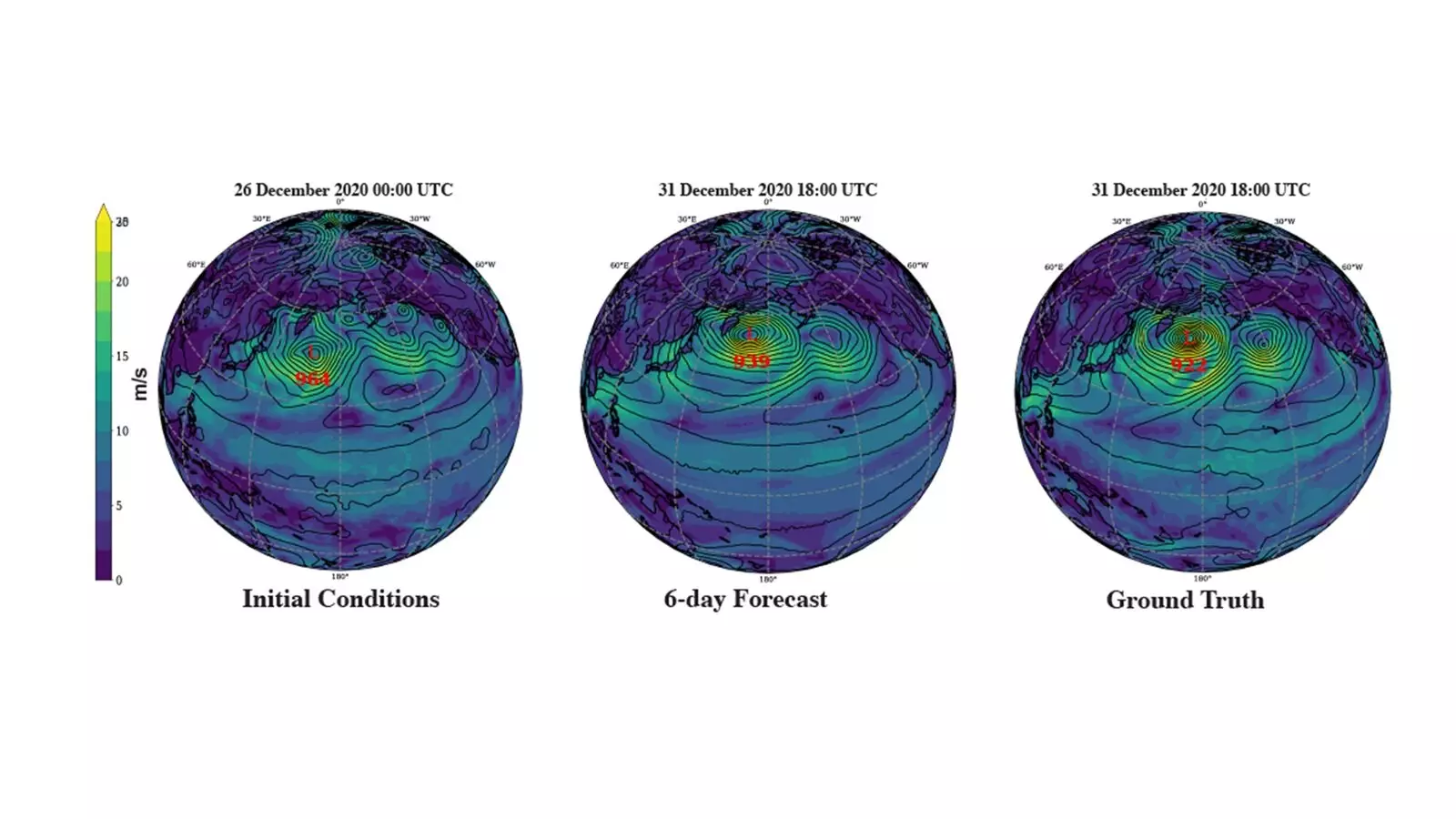Weather forecasting plays a pivotal role in various sectors of the U.S. economy, ranging from aviation and agriculture to shipping and disaster management. With a significant financial stake linked to weather accuracy, the demand for advanced forecasting models has never been greater. Traditional methods of weather modeling rely heavily on complex equations derived from thermodynamics and fluid dynamics, which necessitate massive computational resources to produce actionable forecasts. The launch of innovative artificial intelligence (AI) models presents an exciting and potentially transformative shift in this realm, and the implications for our economy could be profound.
The introduction of AI into weather modeling, particularly through organizations like Nvidia and Google, indicates a move towards harnessing large-scale foundation models for forecasting. These foundation models utilize advanced machine learning algorithms that can process vast amounts of data, enabling them to learn complex patterns in atmospheric variables. As we transition into a world where accurate weather forecasts are increasingly crucial, this trend marks a significant leap forward in our ability to predict and respond to weather-related challenges.
From Traditional Models to AI-Driven Forecasting
Traditional numerical weather prediction (NWP) models are highly intricate and computationally taxing. These models require substantial resources, often necessitating the operation of large supercomputers to run simulations. However, researchers at the U.S. Department of Energy’s Argonne National Laboratory have teamed up with experts from the University of California, Los Angeles, to explore alternative methodologies that could yield more precise forecasts at reduced computational costs.
The research team’s findings are groundbreaking: they have demonstrated that AI-driven weather models can outperform established predictions, specifically when it comes to long-term forecasts extending beyond seven days. The use of “tokens” in these models—small fragments of information representing various atmospheric conditions—enables the AI to understand and predict weather patterns in an entirely new way. Unlike traditional models, which rely on numerical data streams, these AI models utilize visual elements, treating charts and graphs as images that convey essential meteorological information. This paradigm shift represents not only a technological advancement but also a specialized approach to handling spatial-temporal data.
The Advantages of Low-Resolution Data
One notable advantage of the new AI methodology is its ability to generate accurate weather predictions even when using low-resolution data. Historically, meteorologists have pursued higher resolution for improved accuracy, often incurring exorbitant computational costs. However, the researchers at Argonne have found that their AI model can deliver predictions comparable to high-resolution NWP models, challenging the long-held belief that increased resolution is imperative for effective forecasting.
This shift in philosophy could democratize access to advanced weather predictions. By reducing the dependency on high-resolution data, organizations, particularly those with limited resources, may more easily harness the power of AI in their operational planning. The potential for this technology to empower smaller entities—from local farmers to regional airlines—while conserving energy and computing resources is immensely promising.
The Challenges of Climate Modeling
While the advancements in weather forecasting through AI are remarkable, applying similar methodologies to climate modeling proves to be more complex. Climate modeling necessitates a longitudinal perspective, complicating the development of reliable predictive models. Factors such as the ever-changing state of the climate and the effects of rising carbon levels in the atmosphere introduce dynamic variables that are difficult to quantify numerically.
Despite theoretical possibilities for utilizing foundation models in climate modeling, the practical landscape is riddled with challenges. The urgency of private sector interests leans heavily toward immediate weather forecasting applications, leaving more extensive climate analysis to dedicated institutions like national laboratories and academic researchers. The effort to understand and adapt to fluctuating climate conditions—where static data becomes less relevant over time—adds layers of complexity to an already intricate problem.
Preparing for the Future: The Role of Exascale Supercomputers
As the Argonne supercomputer, Aurora, comes online, the research landscape for AI-driven weather and climate models is poised for exciting developments. Aurora’s capabilities will enable researchers to explore more intricate AI models at higher resolutions, allowing for a more nuanced understanding of both weather and climate dynamics.
The accolade of receiving the Best Paper Award at the “Tackling Climate Change with Machine Learning” workshop further underscores the significance of the work being undertaken. Researchers are poised to leverage these advancements for better predictive models, transforming how we interact with our environment.
The fusion of traditional meteorological science with cutting-edge AI technologies stands to reshape our understanding of weather patterns while simultaneously enhancing our economic resilience. The ongoing collaborative efforts signal that a new era of forecasting — with unparalleled precision and accessibility — is not only possible but already in motion.

